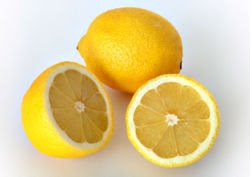 Evidence suggests that onions may be effective against the common cold, heart disease, diabetes, osteoporosis, and other diseases. They contain anti-inflammatory, anticholesterol, anticancer, and antioxidant components such as quercetin.In many parts of the world, onions are used to heal blisters and boils. A traditional Maltese remedy for sea urchin wounds is to tie half a baked onion to the afflicted area overnight. In the morning, the spikes will be in the onion. In the United States, products that contain onion extract (such as Mederma) are used in the treatment of topical scars.In homeopathy, Allium cepa is used for rhinorrhea and hay fever.
Evidence suggests that onions may be effective against the common cold, heart disease, diabetes, osteoporosis, and other diseases. They contain anti-inflammatory, anticholesterol, anticancer, and antioxidant components such as quercetin.In many parts of the world, onions are used to heal blisters and boils. A traditional Maltese remedy for sea urchin wounds is to tie half a baked onion to the afflicted area overnight. In the morning, the spikes will be in the onion. In the United States, products that contain onion extract (such as Mederma) are used in the treatment of topical scars.In homeopathy, Allium cepa is used for rhinorrhea and hay fever.
Onions, like garlic, are members of the Allium family, and both are rich in powerful sulfur-containing compounds that are responsible for their pungent odors and for many of their health-promoting effects. Onions contain allyl propyl disulphide, while garlic is rich in allicin, diallyl disulphide, diallyl trisulfide and others. In addition, onions are very rich in chromium, a trace mineral that helps cells respond to insulin, plus vitamin C, and numerous flavonoids, most notably, quercitin.The higher the intake of onion, the lower the level of glucose found during oral or intravenous glucose tolerance tests. Experimental and clinical evidence suggests that allyl propyl disulfide is responsible for this effect and lowers blood sugar levels by increasing the amount of free insulin available. Allyl propyl disulfide does this by competing with insulin, which is also a disulphide, to occupy the sites in the liver where insulin is inactivated. This results is an increase in the amount of insulin available to usher glucose into cells causing a lowering of blood sugar.In addition, onions are a very good source of chromium, the mineral component in glucose tolerance factor, a molecule that helps cells respond appropriately to insulin. Clinical studies of diabetics have shown that chromium can decrease fasting blood glucose levels, improve glucose tolerance, lower insulin levels, and decrease total cholesterol and triglyceride levels, while increasing HDL-cholesterol levels. Marginal chromium deficiency is common in the United States, not surprising since chromium levels are depleted by the consumption of refined sugars and white flour products as well as the lack of exercise. One cup of raw onion contains over 20% of the Daily Value for this important trace mineral.
The regular consumption of onions has, like garlic, been shown to lower high cholesterol levels and high blood pressure, both of which help prevent atherosclerosis and diabetic heart disease, and reduce the risk of heart attack or stroke. These beneficial effects are likely due to onions' sulfur compounds, its chromium and its vitamin B6, which helps prevent heart disease by lowering high homocysteine levels, another significant risk factor for heart attack and stroke. Onions have been singled out as one of the small number of vegetables and fruits that contributed to the significant reduction in heart disease risk seen in a meta-analysis of seven prospective studies. Of the more than 100,000 individuals who participated in these studies, those who diets most frequently included onions, tea, apples and broccoli-the richest sources of flavonoids-gained a 20% reduction in their risk of heart disease.Quercitin, an antioxidant in onions, and curcumin, a phytonutrient found in the curry spice turmeric, reduce both the size and number of precancerous lesions in the human intestinal tract, suggests research published in Clinical Gasteroenterology and Hepatology.
A compound newly identified in onions with the long complex name of gamma-L-glutamyl-trans-S-1-propenyl-L-cysteine sulfoxide, GPCS, for short, inhibits the activity of osteoclasts (the cells that break down bone). The more GPCS given in this animal study, the more the bone resorptive (breakdown) action of osteoclasts was inhibited.Onions may be especially beneficial for women who are at increased risk for osteoporosis as they go through menopause. Fosamax (Alendronate), the drug typically prescribed to prevent excessive bone loss, works in a similar manner, by destroying osteoclasts, so they do not break down bone. Potential negative side effects of Fosamax include irritation of the upper gastrointestinal mucosa, acid regurgitation, esophageal ulcers and erosions.Several anti-inflammatory agents in onions render them helpful in reducing the severity of symptoms associated with inflammatory conditions such as the pain and swelling of osteo- and rheumatoid arthritis, the allergic inflammatory response of asthma, and the respiratory congestion associated with the common cold. Both onions and garlic contain compounds that inhibit lipoxygenase and cyclooxygenase (the enzymes that generate inflammatory prostaglandins and thromboxanes), thus markedly reducing inflammation. Onions' anti-inflammatory effects are due not only to their vitamin C and quercitin, but to other active components called isothiocyanates. These compounds work synergistically to spell relief from inflammation. In addition, quercitin and other flavonoids found in onions work with vitamin C to help kill harmful bacteria, making onions an especially good addition to soups and stews during cold and flu season.





